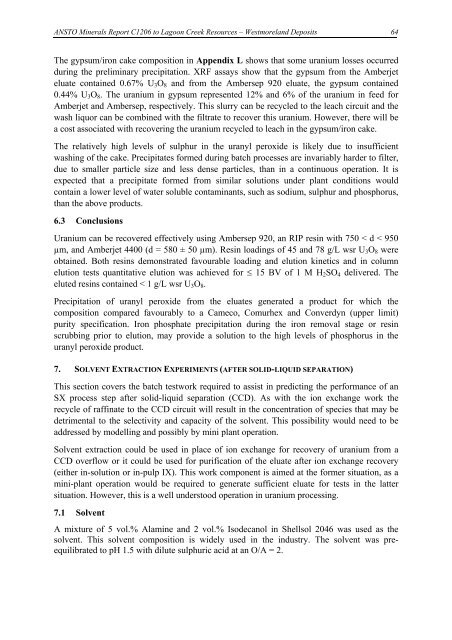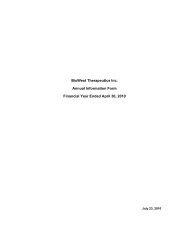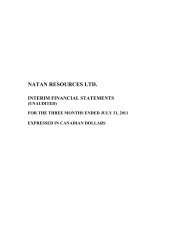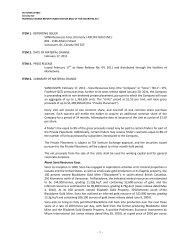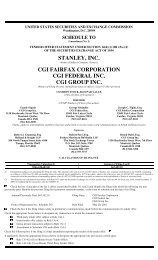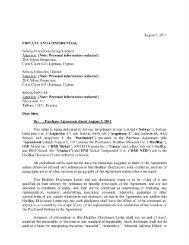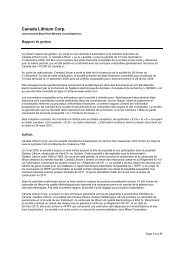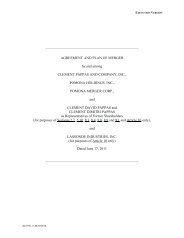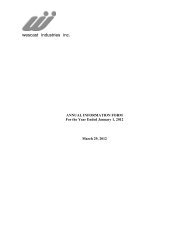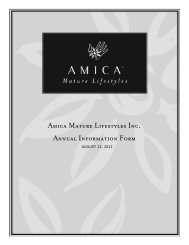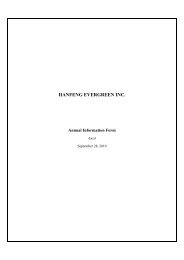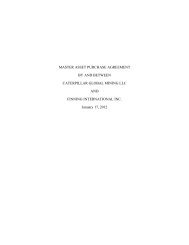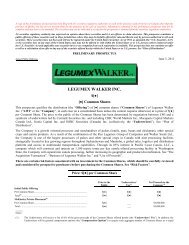Laterite Leach Tests
Laterite Leach Tests
Laterite Leach Tests
You also want an ePaper? Increase the reach of your titles
YUMPU automatically turns print PDFs into web optimized ePapers that Google loves.
ANSTO Minerals Report C1206 to Lagoon Creek Resources – Westmoreland Deposits<br />
The gypsum/iron cake composition in Appendix L shows that some uranium losses occurred<br />
during the preliminary precipitation. XRF assays show that the gypsum from the Amberjet<br />
eluate contained 0.67% U3O8 and from the Ambersep 920 eluate, the gypsum contained<br />
0.44% U3O8. The uranium in gypsum represented 12% and 6% of the uranium in feed for<br />
Amberjet and Ambersep, respectively. This slurry can be recycled to the leach circuit and the<br />
wash liquor can be combined with the filtrate to recover this uranium. However, there will be<br />
a cost associated with recovering the uranium recycled to leach in the gypsum/iron cake.<br />
The relatively high levels of sulphur in the uranyl peroxide is likely due to insufficient<br />
washing of the cake. Precipitates formed during batch processes are invariably harder to filter,<br />
due to smaller particle size and less dense particles, than in a continuous operation. It is<br />
expected that a precipitate formed from similar solutions under plant conditions would<br />
contain a lower level of water soluble contaminants, such as sodium, sulphur and phosphorus,<br />
than the above products.<br />
6.3 Conclusions<br />
Uranium can be recovered effectively using Ambersep 920, an RIP resin with 750 < d < 950<br />
µm, and Amberjet 4400 (d = 580 ± 50 µm). Resin loadings of 45 and 78 g/L wsr U3O8 were<br />
obtained. Both resins demonstrated favourable loading and elution kinetics and in column<br />
elution tests quantitative elution was achieved for ≤ 15 BV of 1 M H2SO4 delivered. The<br />
eluted resins contained < 1 g/L wsr U3O8.<br />
Precipitation of uranyl peroxide from the eluates generated a product for which the<br />
composition compared favourably to a Cameco, Comurhex and Converdyn (upper limit)<br />
purity specification. Iron phosphate precipitation during the iron removal stage or resin<br />
scrubbing prior to elution, may provide a solution to the high levels of phosphorus in the<br />
uranyl peroxide product.<br />
7. SOLVENT EXTRACTION EXPERIMENTS (AFTER SOLID-LIQUID SEPARATION)<br />
This section covers the batch testwork required to assist in predicting the performance of an<br />
SX process step after solid-liquid separation (CCD). As with the ion exchange work the<br />
recycle of raffinate to the CCD circuit will result in the concentration of species that may be<br />
detrimental to the selectivity and capacity of the solvent. This possibility would need to be<br />
addressed by modelling and possibly by mini plant operation.<br />
Solvent extraction could be used in place of ion exchange for recovery of uranium from a<br />
CCD overflow or it could be used for purification of the eluate after ion exchange recovery<br />
(either in-solution or in-pulp IX). This work component is aimed at the former situation, as a<br />
mini-plant operation would be required to generate sufficient eluate for tests in the latter<br />
situation. However, this is a well understood operation in uranium processing.<br />
7.1 Solvent<br />
A mixture of 5 vol.% Alamine and 2 vol.% Isodecanol in Shellsol 2046 was used as the<br />
solvent. This solvent composition is widely used in the industry. The solvent was preequilibrated<br />
to pH 1.5 with dilute sulphuric acid at an O/A = 2.<br />
64


